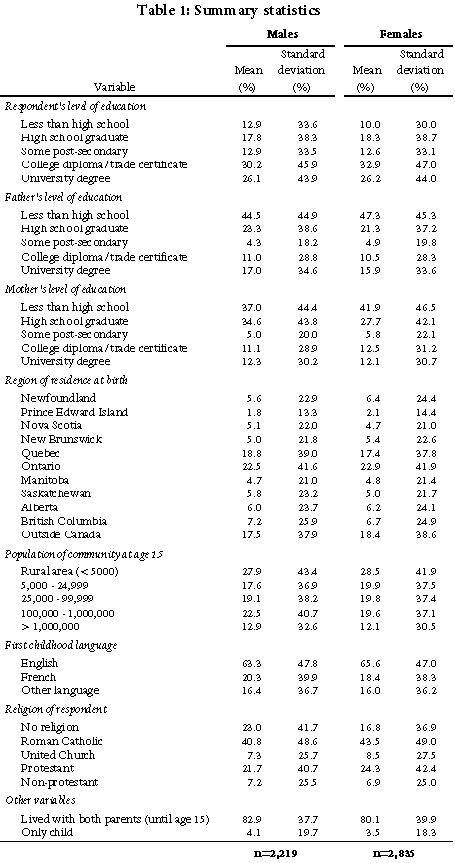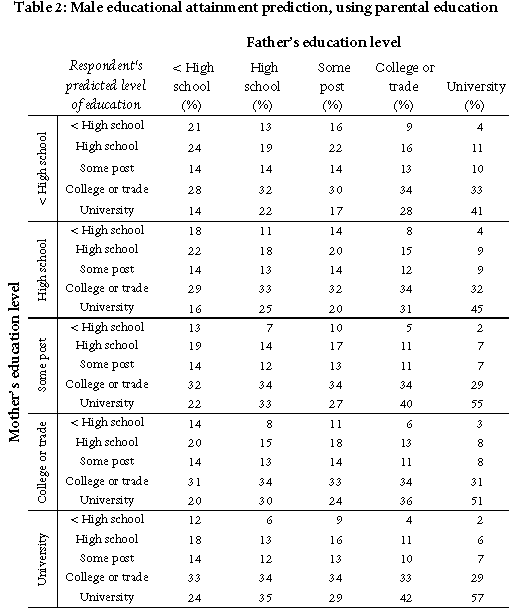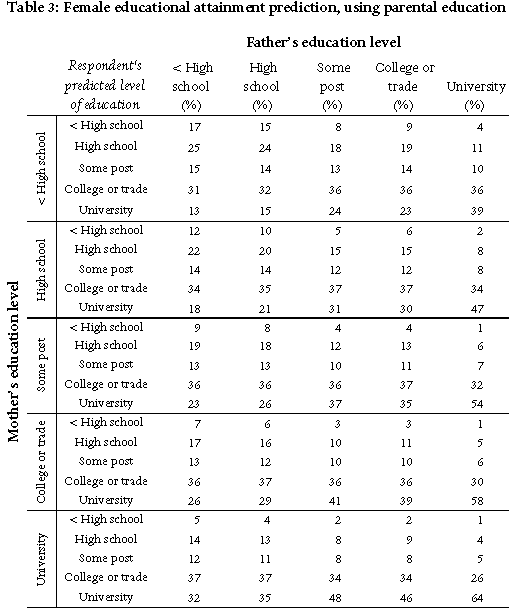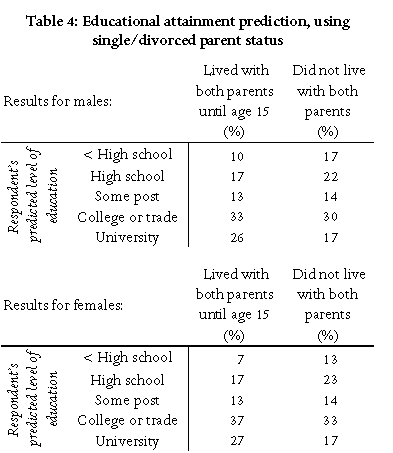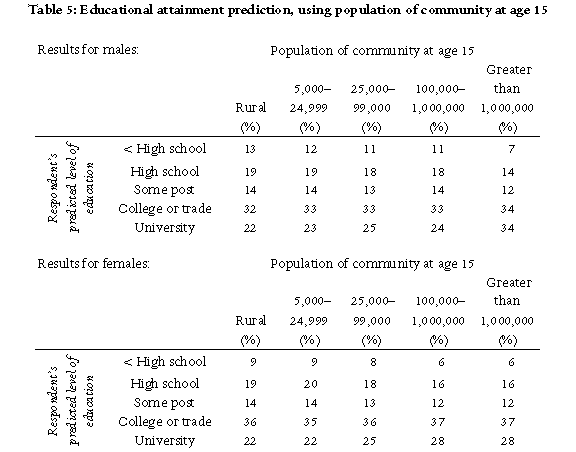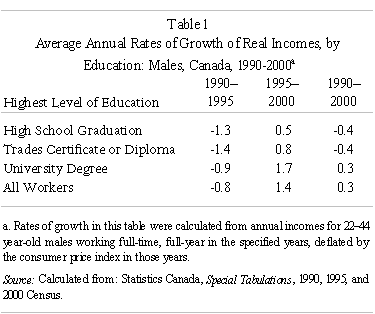by Christopher Bruce
This article first appeared in the summer 2004 issue of the Expert Witness.
The Insurance Amendment Act, 2003, adds the following subsection to Section 626.1 of the Insurance Act:
(2) To the extent that an award is for or is determined with reference to loss of earnings, the amount of the award shall be reduced by
(a) income tax, if the award is not subjected to income tax,
(b) contributions by employees, and 50 percent of contributions by self-employed persons, under the Canada Pension Plan (Canada), and
(c) premiums under the Employment Insurance Act (Canada) relating to the state of being employed, that would be or would have been payable on or with reference to the lost earnings, both before and after the award, had the accident not occurred.
The purpose of this paper is to analyse the impact that this subsection will have upon the assessment of personal injury damages in Alberta. Four general topics will be discussed: calculation of “net income,” introduction of the “tax gross-up” claim, consideration of questions that remain unanswered, and impact of the amendment on the size of personal injury claims.
1. Calculation of “net income”
The effect of the Act is to require that a calculation be made of the plaintiff’s “net income” – that is, his or her income after deduction of income taxes, employment insurance premiums, and CPP premiums (payable by the employee) – in both the without-accident and the with-accident scenarios, both before and after trial. This adds two steps to the calculation of personal injury damages: a determination has to be made of the various types of deductions and tax credits that will be relevant to the plaintiff; and income taxes, EI premiums, and CPP premiums have to be calculated in each year of the plaintiff’s loss.
1.1 Income tax deductions and credits: An individual’s income taxes are affected by many factors other than earned income. Taxable income, for example, is found by deducting contributions to private and public pensions, union dues, and moving costs. And individuals are eligible for tax credits that are determined, in part, by age, marital status, disability, CPP contributions, EI premiums, medical expenses, educational expenses (for example, for a child’s university fees), and charitable donations.
Prior to the passage of the Insurance Amendment Act, none of these factors had to be taken into account in claims for personal injury damages. Now, all of these factors will have to be considered, not just for the plaintiff’s current situation, but also for all situations that might arise over the duration of the plaintiff’s injury. For example, if a young person has suffered a permanent injury, it will now be necessary to predict whether they would have married and had children; how many children they would have had, and when; whether they would have contributed to an RRSP; and, if so, how much and when.
1.2 Calculation of income taxes: One of the most important implications of the Insurance Amendment Act is that plaintiffs’ income tax obligations will now have to be calculated for every year of every scenario of their claims, from the date of the injury to the date on which the effects of the injury will have resolved, regardless of the size of those claims. In claims of short duration, it may be possible to obtain a rough estimate of these obligations simply by projecting the plaintiff’s past tax record forward. For example, if the plaintiff’s taxes were 20 percent of income in the year preceding the accident and he/she will now lose one year of employment (at the same employer, at a similar earnings level), it may be possible simply to assume that the lost income would also have been taxed at 20 percent.
However, if the plaintiff’s employment situation would have (or has) changed had the accident not occurred, or if the period of loss extends more than a few years, it will be necessary to calculate taxes for each period of the loss. Fortunately, a number of computer-based programs are available that will simplify such calculations. First, there are commercial packages such as QuickTax. Second, there is a number of free programs available on the internet. The most sophisticated of these is Canada Revenue Agency’s “TOD” program that can be downloaded from:
www.cra-arc.gc.ca/tax/business/tod
Also, a tax calculator that is much simpler to use, but provides less precision, is found on Ernst & Young’s website at:
www.ey.com/global/content.nsf/Canada/Tax_-_Calculators_-_Overview
In general, income taxes amount to approximately 15 to 25 percent of gross income. Hence, for most plaintiffs, the effect of the Insurance Amendment Act will be to reduce the size of their claim by that percentage.
1.3 Calculation of EI premiums: Employment Insurance premiums will also have to be calculated. However, this is relatively straightforward. For all annual incomes below $39,000, the employee pays 1.98 percent of his/her earnings. For all incomes above $39,000, the EI premium is capped at $772.20 per year. Hence, the maximum effect of this element of the Insurance Amendment Act will be to reduce plaintiff’s claims by less than 2 percent.
1.4 Calculation of CPP premium: Section 626.1(2) states that “…the amount of the award shall be reduced by… (b) contributions by employees, and 50 percent of contributions by self-employed persons, under the Canada Pension Plan (Canada)…” Perhaps surprisingly, this provision will have no effect on plaintiff claims, as it has already been the common practice for most financial experts to deduct these contributions.
This practice has been based on two observations: First, the employer and the employee make equal contributions to the CPP. Second, the present discounted value of the benefit payments from the CPP (once the employee has retired) is equal to (approximately) half of the present discounted value of the CPP contribution stream. (Essentially, the other half of the CPP contributions has been used to “top up” the Plan, which had been under funded.) Hence, restitutio requires that only half of the contributions to the employee’s CPP account be replaced. As the employee’s and the employer’s contributions are of equal value, one can replace half of the contributions by compensating the plaintiff for only one of the two sources. For example, one can compensate for only the employer’s contribution but not for the employee’s. This, in effect, is what the common practice has been in Alberta.
Thus, as the new Act mandates deduction of the employee’s contributions, but does not preclude addition of the employer’s contributions (a form of fringe benefit), it leaves the plaintiff in the same position in which he/she would have been before the Act. That is, the CPP provision of the Act will have no net effect on plaintiffs’ awards.
1.5 Sample calculations: In the attached table, I have calculated the impact of the Insurance Amendment Act on the loss of income claims of plaintiffs at various levels of income. In the calculation of income taxes, I have assumed that the individual has the minimum level of deductions and tax credits. Hence, the figures reported in the table should be taken as maxima. It is seen there that the effect of the Act will be to reduce awards by 15 to 25 percent.
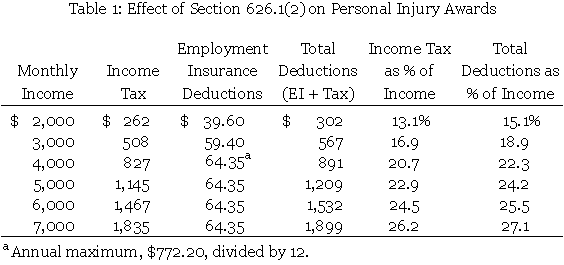
2. Income Tax
The Supreme Court of Canada has ruled, with respect to both fatal accident claims and claims for cost of future care, that if the annual loss is calculated net of income tax, the plaintiff is entitled to an “income tax gross-up” to ensure that the amounts available from the investment of the lump sum damages are sufficient to compensate the plaintiff for his/her future losses. As the Insurance Amendment Act does not explicitly prevent the courts from allowing a tax gross-up, it appears likely that they will allow this calculation. This means that, in every personal injury case in which the plaintiff’s damages are expected to affect his/her income for some time into the future, a tax gross-up calculation will have to be made.
2.1 The basis of the calculation: Assume that the plaintiff has lost a gross (before tax) income of $50,000 one year from now, that his income taxes on that amount would have been $10,000, and that the interest rate at which he can invest a lump-sum award is 5 percent. Prior to the passage of the Insurance Amendment Act, the plaintiff would have been entitled to an award of $47,619 – as investment of $47,619 at 5 percent will provide a return of $2,381; and $2,381 plus $47,619 is $50,000.
Under the new Act, however, the plaintiff is to be compensated only for his after-tax loss, of $40,000. Thus, if the taxes on interest were ignored, the lump-sum award would be $38,095 – as $38,095 plus 5 percent of $38,095 (= $1,905) is $40,000. However, assume that the interest on the lump sum award will be taxed at 20 percent. In that case, investment of $38,095 at 5 percent would yield a net (after-tax) return of only $1,524 ($1,905 minus 20 percent) and the plaintiff would have only $39,619 with which to replace his $40,000 loss.
The 20 percent tax on investment income has reduced the effective rate of interest by that 20 percent, from 5 percent to 4 percent. (Note that $1,524 is 20 percent less than $1,905, or 80 percent of $1,905.) Thus, if the plaintiff is to have $40,000 available to him one year from now, more than $38,095 will have to be invested today. In this case, that amount will be $38,462 – as $38,462 plus 4 percent of $38,462 (= $1,538) is $40,000. The difference between $38,462 and $38,095 is called the income tax gross-up. NOTE: The gross-up equals the income tax that must now be paid on the interest income that derives from investment of the lump-sum award.
2.2 The magnitude of the tax gross-up: Note that in my simple example, the tax gross-up was very small relative to the size of the lump sum award. This is because there was only one year of losses and, hence, the lump-sum award, (on which interest was to be calculated), was small relative to the size of the annual loss. In cases in which losses are expected to continue for longer time periods, however, both the lump-sum award and the interest earned on investment of that award will be larger relative to the size of the annual payments. In such cases, the gross-up will become a much larger percentage of the award.
For example, assume again that it has been determined that the plaintiff has lost $50,000 per year before taxes, that taxes on that income would have been $10,000 per year, and that the interest rate is 5 percent. Assume also that the loss is expected to continue for 40 years and that the lump-sum award required to replace this stream, before addition of the gross-up, would have been $500,000. If that amount is invested at 5 percent, $25,000 in interest will be generated in the first year and, at a tax rate of 20 percent, the plaintiff will be required to pay $5,000 in taxes. That $5,000, and comparable (but declining) amounts calculated in all 40 of the future years of the loss, will have to be added to the award to ensure that the plaintiff can replace his/her after-tax losses. These “additions” constitute the gross-up.
In many cases, the addition of the gross-up will increase the award by as much as half of the reduction that resulted from the omission of income taxes. For example, if the lump sum, without the gross-up, has been reduced by 20 percent, the gross-up will often add as much as 10 percent back to the award.
It is interesting to ask whether it is possible that the award with the gross-up could be higher than the award that would have resulted from application of the “old” rules, in which income taxes were ignored. The answer is that it is highly unlikely that this will occur. In the example above, the effect of the Insurance Amendment Act was to reduce the plaintiff’s annual claim by $10,000, from $50,000 to $40,000, due to the deduction of 20 percent income taxes. Before the gross-up calculation could return the lump-sum award to the level it would have had prior to the Act, the taxes on investment income – the amount to be added for the gross-up – would have to equal that $10,000. In my example, that would require that investment income be $50,000 per year as, at a tax rate of 20 percent, that would generate $10,000 worth of taxes. (For example, if the lump sum was $1,000,000 and the interest rate was 5 percent, $50,000 investment income would be generated each year.)
That is, before the tax gross-up calculation would “add back” the income tax that had been deducted as a result of the Insurance Amendment Act, (in this case, $10,000 per year), the interest income in each year would have to equal the loss of before-tax income in that year. In my example, the annual before-tax income was $50,000, on which taxes would be $10,000. In order for the investment of the lump-sum award to create $10,000 in taxes on investment income, (which is the amount to be added for the gross-up), at the same 20 percent tax rate, it would have to generate $50,000 in such income. (Again, at a 5 percent interest rate, the lump-sum would have to be $1,000,000.)
But assume that investment of the lump sum did generate $50,000 investment income. That would exactly equal the amount required to pay for both the tax on that income ($10,000) and the compensation required for the plaintiff’s loss of net income ($40,000). That is, after deduction of the two payments from the interest income, the lump-sum would be left intact. But that cannot be correct. It is clearly the intention of the court that the lump sum award be drawn down each year, to help pay for the annual losses, until there is nothing left at the end of the period of the loss. That can only occur if the investment (interest) income in each year is less than the payments for taxes and the plaintiff’s loss. And that implies that the taxes on the investment income (the gross-up) will be less than the taxes on (gross) employment income. In short, in all but very exceptional cases, the gross-up will not be sufficient to return the lump-sum to the level that would have been awarded in the absence of the Insurance Amendment Act.
3. Unanswered Questions
With respect to the income tax issue, the primary question that will have to be answered by the courts is whether a tax gross-up will be allowed. Some lesser questions may also be raised:
3.1 Collateral benefits: The Insurance Amendment Act requires that many collateral benefits be deducted from the plaintiff’s claim. It is not clear whether the plaintiff will be able to include the interest earned on the investment of such benefits in the calculation of the tax gross-up.
3.2 “Add backs”: Self-employed individuals are often able to write off personal expenses as business expenses for the purpose of calculating taxable income. For example, business owners often claim that a greater portion of their vehicle, telephone, and mortgage expenses are for business use than is actually the case. Commonly, in personal injury claims, the “personal” portions of these expenses are “added-back” to reported income in order to obtain a measure of “true” income.
How should income taxes be calculated on this “add back?” Assume, for example, that the plaintiff had been reporting earnings of $30,000 per year, on which she had been paying income taxes of $4,000. Assume also, however, that this individual had benefited personally from $5,000 worth of business expenses per year. When this amount is added back to obtain the “true” measure of income, $35,000, should the income tax calculation be based on that ($35,000) figure, even though the plaintiff had been paying taxes on only $30,000? Or should the court recognise that, in the absence of the accident, the plaintiff would have received $31,000 (= $30,000 reported income – $4,000 income tax + $5,000 “business” expenses) worth of benefits (after tax) from her employment?
3.3 Replacement cost: It is not clear how the Insurance Amendment Act will affect the determination of damages when damages are measured using the “replacement worker” method.
In many cases involving self-employed individuals it is unclear (a) what their true income would have been if they had not been injured; nor (b) what their income will be now that they have been injured. It is often possible to determine, however, how much it would cost to hire a “replacement worker” whose input would return the plaintiff’s business to its pre-injury level of profitability.
Assume, for example, that the plaintiff’s income would have been $50,000 per year if she had not been injured and that it will be $20,000 per year now that she has been injured, but that neither figure can be calculated with any degree of certainty. Assume, however, that it is known that if the plaintiff was to hire an assistant for $20,000 per year, the firm would be as profitable as it would have been if the plaintiff had not been injured. In that case, it is argued, if the plaintiff was paid $20,000 per year, she would be put back in the position she would have been in had she not been injured.
But notice, if the plaintiff had not been injured, her business would have earned a profit of $50,000 per year, on which she would have paid income taxes. With the hiring of the replacement worker, the business again makes a profit of $50,000 before payment of $20,000 to the replacement worker. But, after the replacement worker has been paid, the plaintiff’s business will show only a $30,000 profit; and it is on that number that taxes will be calculated. Thus, if the plaintiff is awarded $20,000 per year, with which to compensate the replacement worker, her net income “with injury” will be: $50,000 (= $20,000 plus $30,000) minus the taxes on $30,000. This is greater than her net income before injury, which was $50,000 minus the taxes on $50,000.
It is not clear how the court will wish to deal with this anomaly, if at all. Note that any attempt to calculate the tax implications of using the replacement worker method will require that estimates be made of both the plaintiff’s with- and without-income streams. Yet it was to avoid having to make those estimates that the replacement worker approach was devised.
4. Impact of Insurance Amendment Act
The Insurance Amendment Act will reduce damage awards by the greatest amount in the following situations:
- Those in which the plaintiff had been earning a relatively high income and, therefore, had been paying relatively high income taxes.
- Those in which the plaintiff’s injuries are expected to continue for a relatively long period of time, as the effect of compensating for only after-tax income will be compounded over the duration of the loss – and as the tax gross-up will not fully offset the reduction for taxes.
- Those in which the plaintiff is not self-employed. Self-employed individuals are able to write off personal expenses against their business income. Assume that it has been determined that those expenses amount to $5,000 per year. Typically, under the current system, that $5,000 will be “added back” to reported income in order to obtain a “true” measure of income. However, the individual would have had to earn more than $5,000 in order to generate enough income to purchase $5,000 worth of goods if he/she had not been self-employed (because income taxes would have been payable on any such income). Hence, the current practice actually compensates the plaintiff only for his/her loss of after-tax income. As that is what will be required under the Insurance Amendment Act, such plaintiffs will be in the same position under this Act as they were previously.
- Individuals who have a cost of care claim. The income tax gross-up on a cost of care claim will be higher, the greater is the award for loss of earnings. (The higher is the award for loss of earnings, the greater is the interest that will be earned on investment of that award and, therefore, the higher will be the income tax bracket in which other sources of income – for example, interest on the cost of care award – will be placed.) As the Insurance Amendment Act reduces awards for loss of earnings, it will also reduce awards for cost of care.
5. Conclusion
It is my expectation that Section 626.1(2)(a) of the Insurance Amendment Act will not introduce any significant legal principles that have not already been analysed carefully with respect to fatal accident and cost of care claims. The primary impacts of the amendments are (a) more time and effort will now have to be expended in the calculation of personal injury damages (particularly when a gross-up is required); and (b) personal injury damage awards will now be approximately 15 to 25 percent lower than they were previously.
Footnotes:
* This article is based on presentations Dr. Bruce gave to ACTLA seminars in Calgary and Edmonton on June 21 and 23, 2004. He thanks the participants at those seminars for the excellent feedback that helped him to revise his paper. [back to text of article]

Christopher Bruce is the President of Economica and a Professor of Economics at the University of Calgary. He is also the author of Assessment of Personal Injury Damages (Butterworths, 2004).
